Pekoe Tea Grades: Unmuddling the OP, BOP, SFTGFOP System
The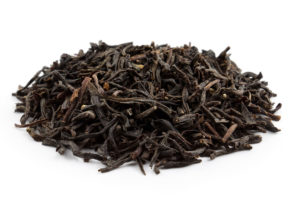 re’s no clear way to classify the quality of teas. China uses growers’ and sellers’ ratings, sometime as simple numbers: Grade 1 (highest), 2, through to 7-9, the most likely you’ll find in the supermarket. It also often uses labels analogous to USDA beef grade of Prime, Choice, though without formal certification: Premium, Choicest, Fine. Japan’s grades for matcha are among the sharpest in implication: Ceremonial and culinary, which breaks down into premium, café, ingredient, kitchen and classic. That’s helpful; most matcha buyers might stop and rethink that low cost package if it were labeled Kitchen matcha rather than implied as the top of the line ceremonial.
re’s no clear way to classify the quality of teas. China uses growers’ and sellers’ ratings, sometime as simple numbers: Grade 1 (highest), 2, through to 7-9, the most likely you’ll find in the supermarket. It also often uses labels analogous to USDA beef grade of Prime, Choice, though without formal certification: Premium, Choicest, Fine. Japan’s grades for matcha are among the sharpest in implication: Ceremonial and culinary, which breaks down into premium, café, ingredient, kitchen and classic. That’s helpful; most matcha buyers might stop and rethink that low cost package if it were labeled Kitchen matcha rather than implied as the top of the line ceremonial.
Then there’s the only one that amounts to a system: pekoe grades. It’s comprehensive, precise, arcane – and also easy to misinterpret. It looks like the tiles you might be dealt in a Scrabble game: F, O, T, G, B and a few others that when put together could be the result of your cat hitting the upper case key and pawing your keyboard. Here’s a few instances: TGBOP, SFTGFOP1, BOP1, FBOPF and GFOP.
Orange Pekoe means just whole leaf black tea
Ignore “Orange pekoe” and substitute “black tea.” Pekoe seems to be a dialect term from the port region of Amoy. It first appears in English in the early 18th century and became the base for traders in the explosive growth of Indian teas, as a comprehensive system for describing auction lots.
The Orange is believed to refer to the Royal House of Orange-Nassau that ruled the Netherlands, which was by far the leading shipper and smuggler, with its American colonies consuming three times the tea per capita than England. The Orange name would be a warranty of quality and authenticity.
Pekoe grades describe the appearance not the quality of the drink
So, the Orange has nothing to do with orange and pekoe is just another word for tea. Now, as for the grades, they have little to do directly with quality of taste and aroma, bur classify the appearance of the leaf, with qualifiers about taste-relevant features. They distinguish the final outputs of the processing of the harvested leaf. A black tea is formed as it moves through withering, rolling or crushing, oxidation and drying. The end product mix that is sold to brokers, tea brands and exporters will be a variety of forms: whole and broken pieces, some with distinctive tips, and shapeless bits and pieces. Think of this in terms of a sieve: small bits fall through the mesh and the intact ones stay on the surface, to be scrutinized and the best picked out and graded accordingly. The underlying logic is the better the lea looks, the better it will brew in your pot.
Here are the categories when all these have been sorted out. There are two basic ones: Whole and Broken leaf.
Whole leaf: flowery OP
 Whole leaf is just that: intact and well-shaped, the unit of specialty tea. Label it as flowery leaf orange pekoe: FOP. This is in contrast with broken leaf: BOP. To the left add a few more distinguishing characteristics, semi-subjective and based on expert experience-based judgement. If it has plenty of the golden tips that add subtle overtones and sweetness to a well-made tea, it’s Golden FOP: GFOP. This is a feature of many of the better African teas. The grade indicates a middle rating – a well-made leaf that should produce reliable and satisfying plain tea.
Whole leaf is just that: intact and well-shaped, the unit of specialty tea. Label it as flowery leaf orange pekoe: FOP. This is in contrast with broken leaf: BOP. To the left add a few more distinguishing characteristics, semi-subjective and based on expert experience-based judgement. If it has plenty of the golden tips that add subtle overtones and sweetness to a well-made tea, it’s Golden FOP: GFOP. This is a feature of many of the better African teas. The grade indicates a middle rating – a well-made leaf that should produce reliable and satisfying plain tea.
Then the marketing gets added. The leaf is very high quality with abundant unopened buds: Tippy GFOP: TGFOP. It may have claims to be a leaf quality that merits the distinction Finest. FTGFOP. These have a pedigree and come from the best estates.
The very, very best is singled out as Special and marked as SFTGFOP – easy to remember through the widely used acronym Still Far Too Good For Ordinary People… Special – top of the line, Finest – a class in itself, Tippy – select and just what you need for a distinctive tea, Golden – lots of flavor potential, Flowery – fresh-looking and well-formed, OP – black tea.
There are additional stylistic flourishes that have evolved. For instance, to pick out a tea as not just Tippy but superior Tippy or more than just Special but Very Special, it’s routine to add a “1” at the end, for grade 1. So, there is the final mouthful for a terrific-looking tea that should brew with lots of flavor, great aroma and smooth consistency: SFTGFOP1. Well, not quite final There’s even an SPL for Special that marks a tea as SFTGFOP1 SPL. This could be summarized as bring your credit card or plenty of cash.
Again, remember this grading rates the appearance of the leaf. It doesn’t include the quality added by the leaf grower. List Castleton or Margaret’s Hope at the front and the meaning expands to “This is the very best leaf from one of the very best Darjeeling estates” and “Bring your credit card – it will be worth spending extra.”
Broken leaf
M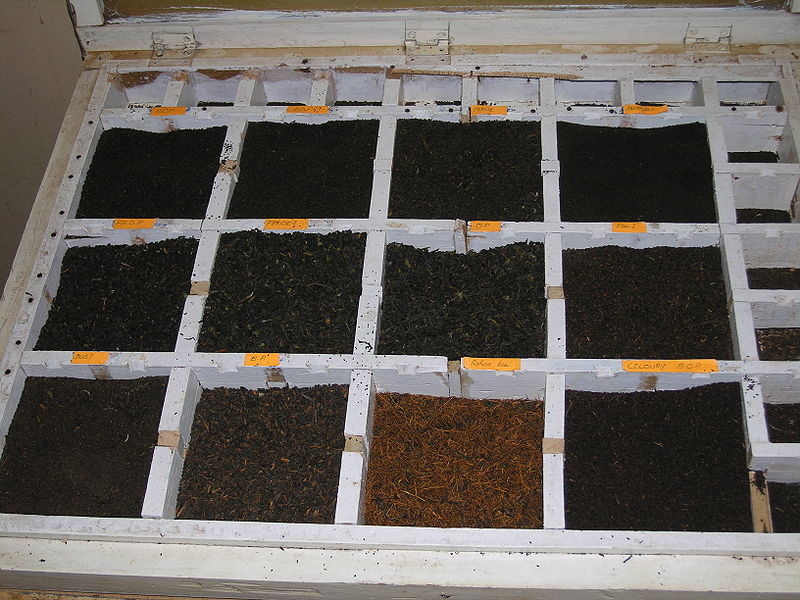 ost black tea isn’t whole leaf. It’s broken but still recognizably a leaf. Its broken because of its growth on the bush, from hand harvesting or being chomped up in machine processing, termed CTC (crush-tear-curl). The pieces are large enough to be recognizable as a leaf, as contrasted with the fannings and dust that need a magnifying glass to discern their shape. The basic broken leaf is BOP in pekoe gradings. The teas are generally assumed to be lower in taste quality but can provide a decent enough drink at an attractive cost. The breaking up of the whole leaf tends to produce a markedly more bitter flavor; the exposed surface area that releases the many chemical compounds in the tea are larger, speeding up the steeping. There are various grades, with the same F and T distinctions, but those are mainly of interest to buyers of tea not drinkers.
ost black tea isn’t whole leaf. It’s broken but still recognizably a leaf. Its broken because of its growth on the bush, from hand harvesting or being chomped up in machine processing, termed CTC (crush-tear-curl). The pieces are large enough to be recognizable as a leaf, as contrasted with the fannings and dust that need a magnifying glass to discern their shape. The basic broken leaf is BOP in pekoe gradings. The teas are generally assumed to be lower in taste quality but can provide a decent enough drink at an attractive cost. The breaking up of the whole leaf tends to produce a markedly more bitter flavor; the exposed surface area that releases the many chemical compounds in the tea are larger, speeding up the steeping. There are various grades, with the same F and T distinctions, but those are mainly of interest to buyers of tea not drinkers.
Fannings and dust are the stuff that falls through the sieve. Fannings are even more broken up than Broken OP. Dust is just that. These don’t look quality and aren’t anywhere near as flavorful and subtle as FOPs. Have you ever torn open a tea bag? It will be fannings for the better names and dust for the low end ones. They both have their letters added but not of interest to the tea consumer. The Sri Lanka version has more of these lowest grades since they are a major part of its bulk exports. It has a BOPF grade Broken OP Fannings.
If tomatoes were pekoe graded
A useful way to make sense of the acronym muddle of the Orange Pekoe grading system is to substitute “tomato” for “tea.” Take a look at these four tomatoes. The one on the left is a thing of beauty: an alluring red, perfect shape, and promising sweetness and fullness of taste. The second is not quite so appealing and the third shows cracking around the stem. The fourth is misshapen, with what looks like a nose growing to the side.
Which of these is likely to be highest in quality? The beauty example looks terrific and would merit a “Special Fine” grading – the SF in SFTGOP tea. With that wholeness and ripeness, it should taste special and fine, too. Or it may be a disappointment and just another overpriced, bland, artificially enhanced and near tasteless supermarket choice. The ordinary one could be as good or better, with a fuller or sweeter taste. That depends on the growing and harvesting: for instance, which one was vine-ripened and when was it plucked – at the immature green or near ready to eat stage? How about the soil it was grown in? Rich in key nutrients, such as potassium and calcium, suitably acidic, at least half a day of sunlight? Is it organically grown? How fresh is it?
Appearance doesn’t directly indicate these. For tea, it’s generally the region, farm and bio-management practices that adds a non-visible dimension to the quality assessment. A TGFOP is a middling grade corresponding to the ordinary tomato. Add that it’s an Assam Hartialli or Darjeeling Singtom estate TGFOP and the same grade provides different quality indicators; these are fine producers and their TGFOPs won’t just look pretty good but be distinctive. You’d expect a strong and heavy taste from the Assam and slightly sweeter and brighter one from the Darjeeling.
Swap the FOP for a BOP and you are looking at the equivalent of the blemished tomato – Broken leaf not whole. Are the skin streaks merely cosmetic? Do they affect the taste compared to the beauty and ordinary? Maybe it’s a hardy heirloom variety with special characteristics passed on through generations. There are many experts who prefer a BOP from a top producer to a great looking and hence Beauty grade one from a lesser source of origin.
Finally, the misshapen tomato looks weird but that doesn’t show how it differs in flavor from the beauty. It could well be the best choice of all, since it will be discounted in price because of its appearance. This misshapen fruit comes from the same plant and harvest as the beauty and is exactly the same in taste but doesn’t look as good.
The tomato comparison puts tea grading in context: The categories answer a simple commercial question concerning a lot up for auction or direct purchase: What does add up for us to work with? Both seller and buyer of a tea have only the final product to use to sort out the outputs of the processing. The tea can be lab tested later in the distribution chain, for customs and safety regulators, retailer quality control and blending recipes.
Tea grades in general are at best guidelines. There’s no standardization and too much subjectivity and self-interest in much of the rating. They can definitely be helpful. But just that. They are not reliable indicators of overall quality.
An Indian TGFOP or Sri Lanka OP (Ceylon teas basically uses the simpler OP and BOP distinction) from a well-regarded source of origin is probably more than good enough and affordable for most tea drinkers. Many of the best brands that market their teas in tins don’t list a pekoe grade. They don’t need to.
Tea Market
Get More Value from Your Tea: BRU Maker One
+41794574278
Jacque's Organics
(647) 804-7263
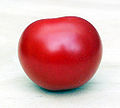
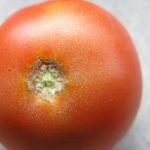
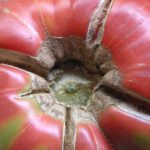
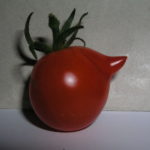
How can we know if a tea is free from pollutants and pesticides? If it is grown in a pollution free area, and under organic standards?
Certified organic teas are – in theory, at least – inherently free of pesticides and pollutants. However, I would like to point out that even a cup of tea brewed from leaves produced in a conventional (as in non-organic certified) garden will have negligible, probably indetectable, amounts of residue. Please keep this in mind when you are buying your milk, produce, meat, etc., at the supermarket. If you’re not buying organic in these categories, changing those purchasing habits will have substantially more positive health benefits than whatever tea you are buying.
How can being grown organically insure against pollutants? China has some of the worst air pollution in the world. Not only are these pollutants deposited on the leaves, but the soil has been absorbing them for decades!